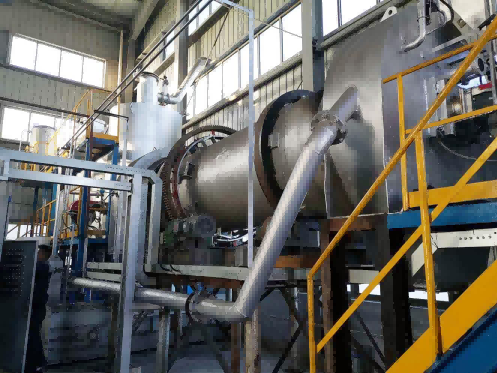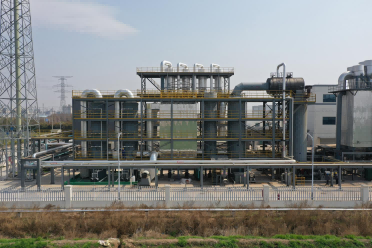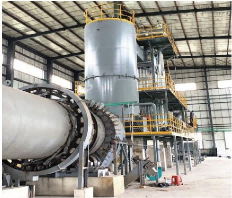
Principle introduction: The dry distillation pyrolysis furnace, commonly known as the controlled gas furnace, is a promising method for treating hazardous solid waste, especially applied in the field of industrial hazardous waste and medical waste incineration. It is a chemical decomposition process caused by the thermal decomposition of objects burned in an atmosphere with insufficient oxygen. The combustion layer in the pyrolysis gasification furnace is divided into drying section, pyrolysis section, burnout section, and cooling section from top to bottom. The pyrolysis furnace is a pyrolysis zone of solid waste under controlled oxygen conditions. After ignition, pyrolysis and oxidation, the combustion air volume is 20%~40% of the chemical oxygen demand. The heat generated by the pyrolysis of the lower layer of solid waste is transferred to the upper layer of material, which is dried, pyrolyzed, and carbonized. The entire pyrolysis furnace is divided into a burnout layer, a combustion layer, a carbonization layer, a thermal layer, and a drying layer. The combustible gas generated by pyrolysis enters the secondary combustion chamber for further combustion.
Furnace type classification:
☆ Single furnace pyrolysis furnace
☆ AB furnace and multi furnace pyrolysis furnace
☆ Continuous pyrolysis furnace
Heat recovery form:
☆ Recovery of saturated steam
☆ Heating heat transfer oil
☆ Recycling hot water
Processing scale and scope of application:
☆ Processing capacity: 1-20t/d
☆ Treatment method: low-temperature pyrolysis
☆ Scope of application: Medical waste, aviation waste, industrial solid hazardous waste, household waste, chemical waste, electronic industry waste, precious metal recycling
Structural features:
☆ Wide adaptability, more advantageous for large waste.
☆ Disposable feeding, easy to operate, zero contact between personnel and garbage, while greatly reducing the labor intensity of operation.
☆ The pyrolysis furnace is in a low-temperature gasification state, with little burden and damage to the furnace body, and a long service life of the furnace body.
☆ Dioxins tend to emit zero, and the emitted gases are non-toxic and odorless, without black smoke or odor, meeting national environmental protection requirements.
☆ The equipment is compact, with minimal static pyrolysis, gasification, incineration, and dust generation of waste, greatly reducing the purification load of subsequent tail gas and effectively avoiding heavy metal fly ash pollution.
☆ Fully utilize the pyrolysis energy of waste itself to reach the temperature of secondary combustion, thereby greatly reducing energy consumption.
☆ The inner lining of the incinerator can be made of refractory castable or a water jacket structure.
☆ Negative pressure design, high degree of automation, automatic adjustment of air volume, maintaining normal and stable operation in the furnace. The temperature of the flue gas at the outlet of the secondary combustion chamber is automatically adjusted to the state of the burner, achieving automatic start-up and shutdown procedures.
☆ When the calorific value of garbage is between 2500 and 3000 kcal, no additional fuel is required for combustion.




